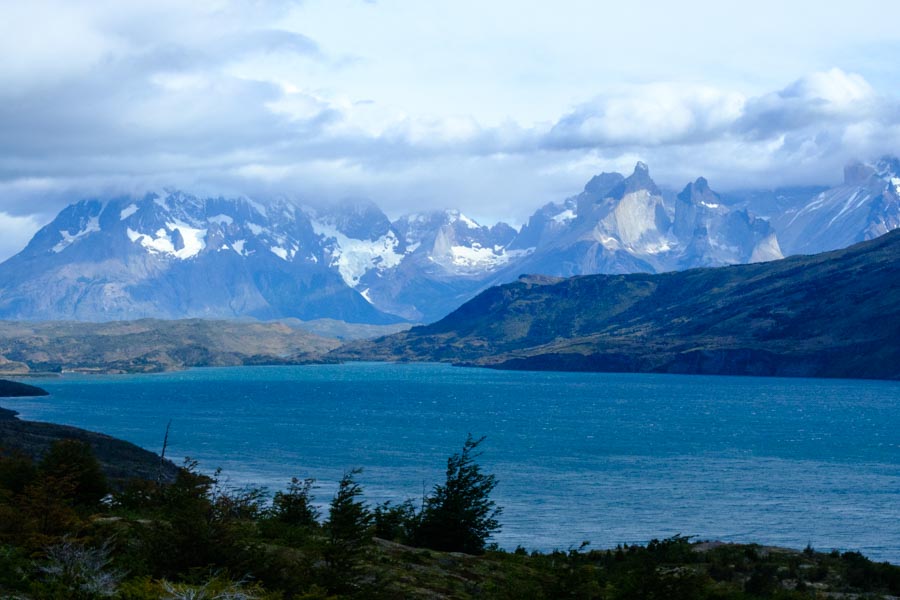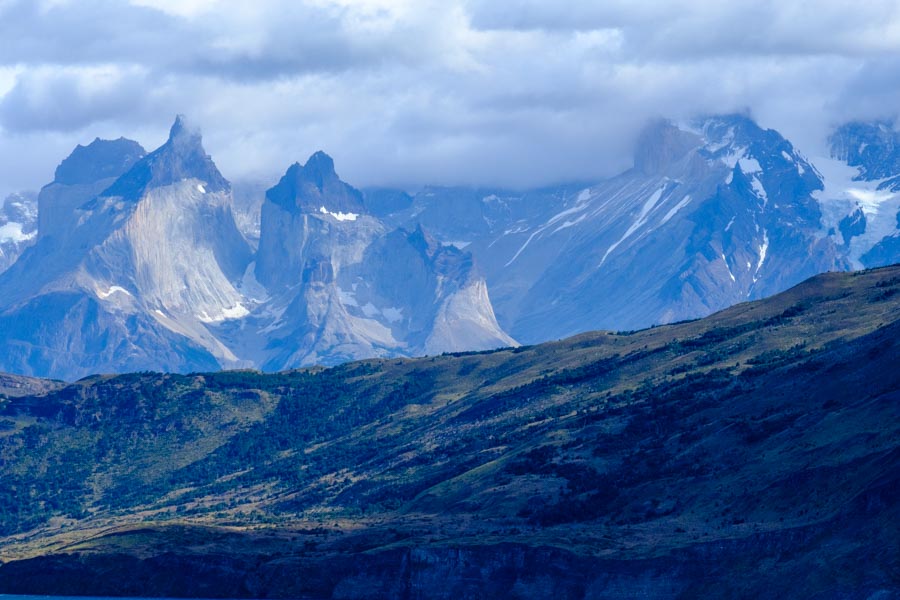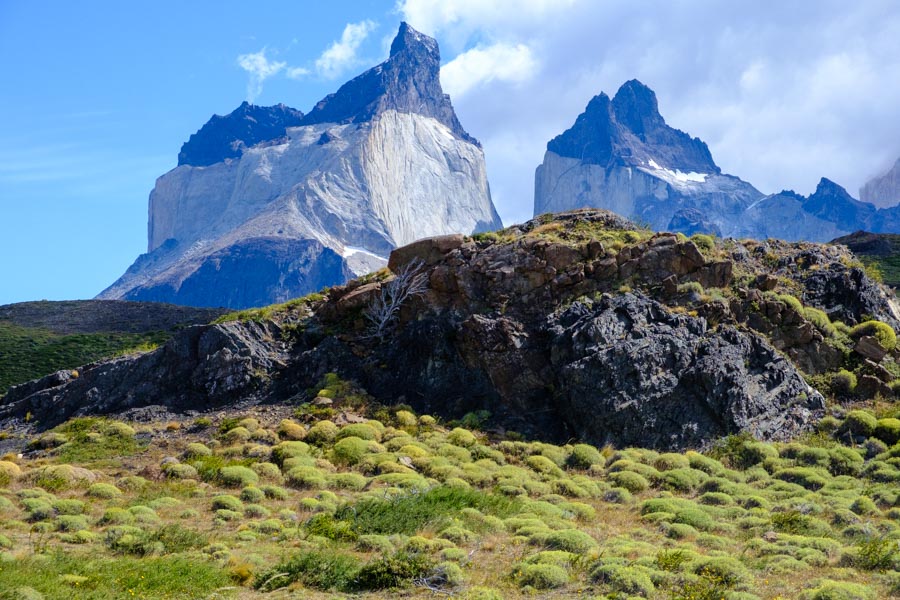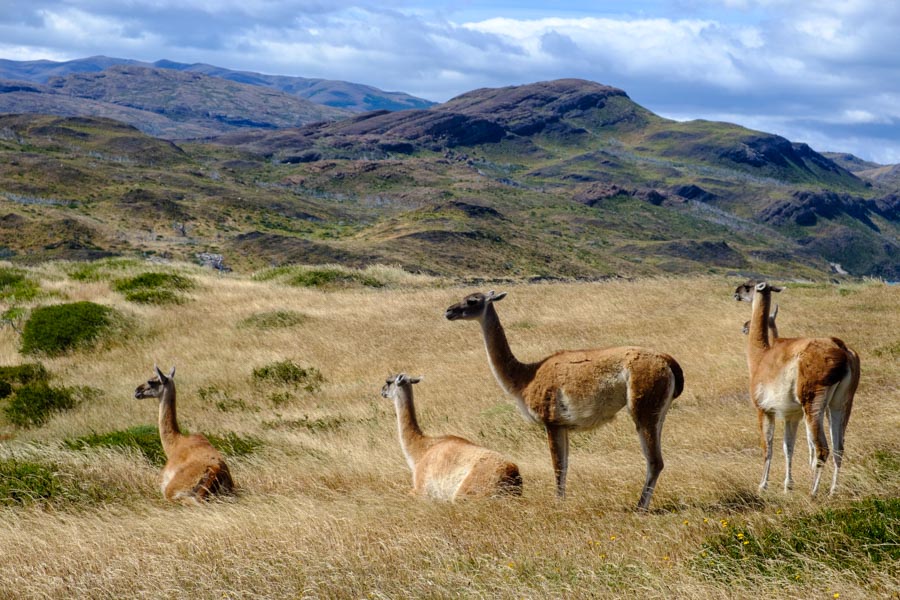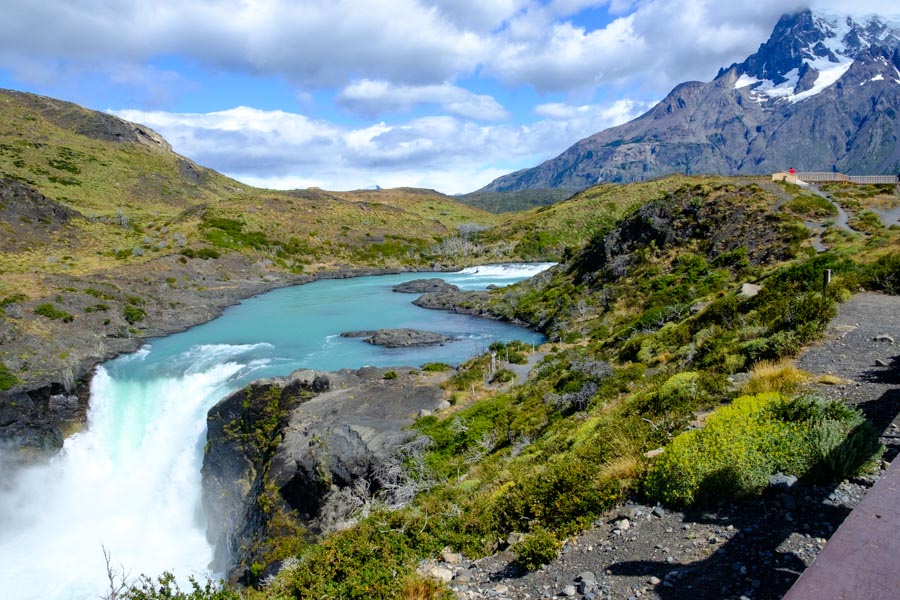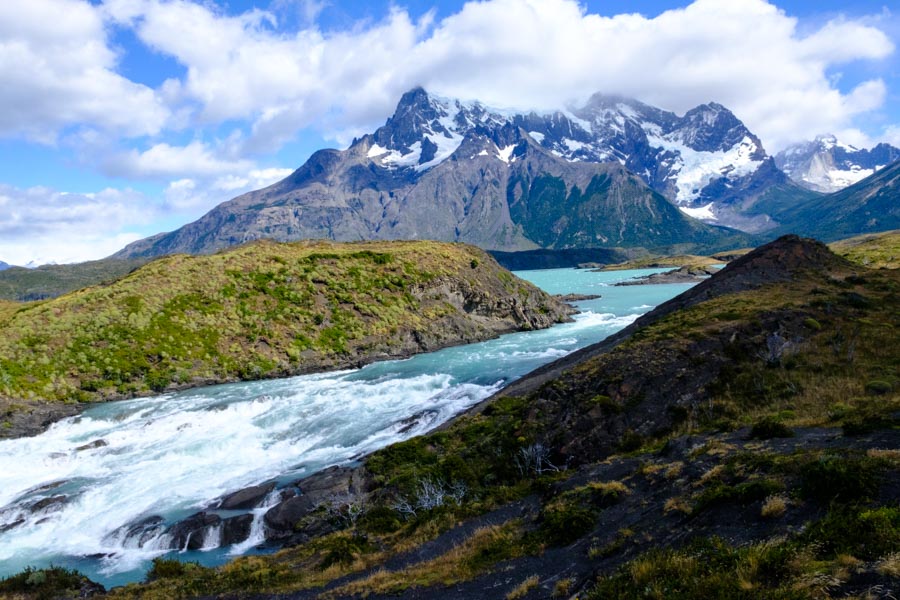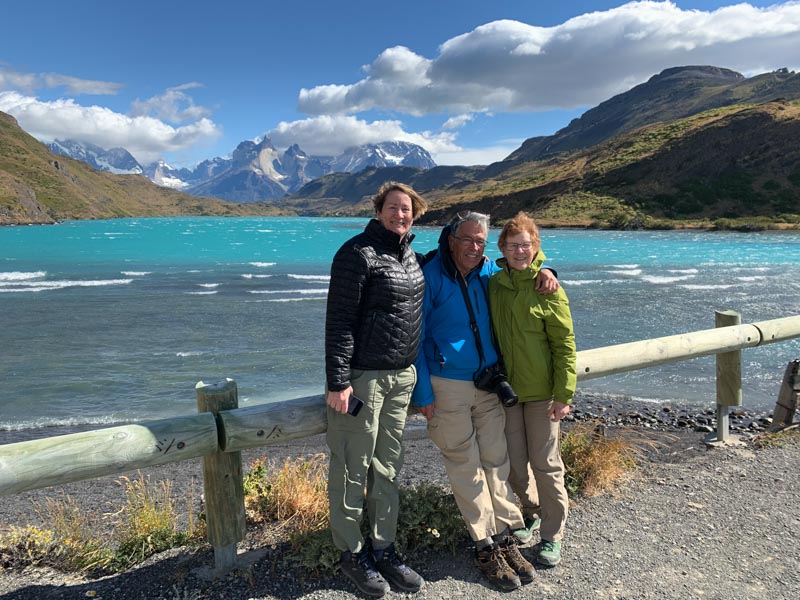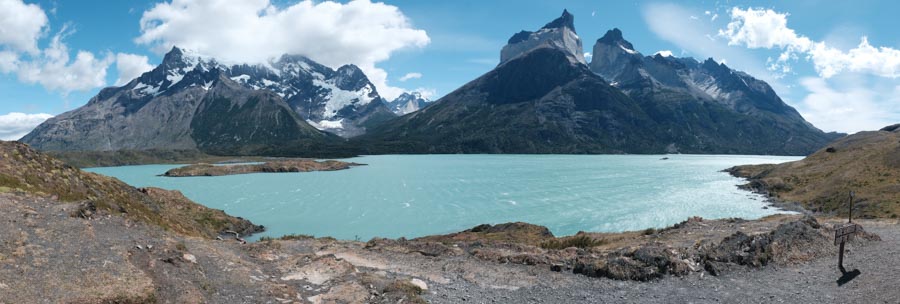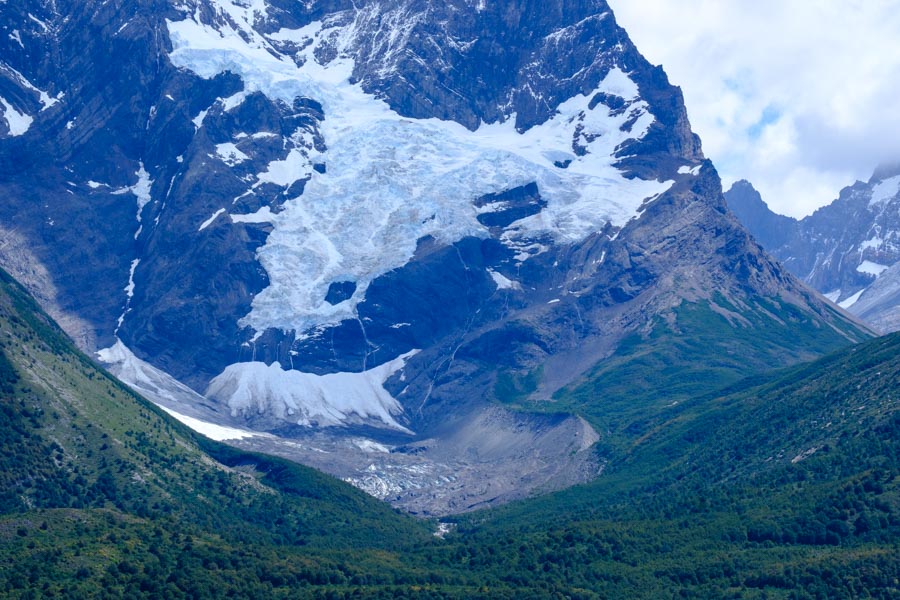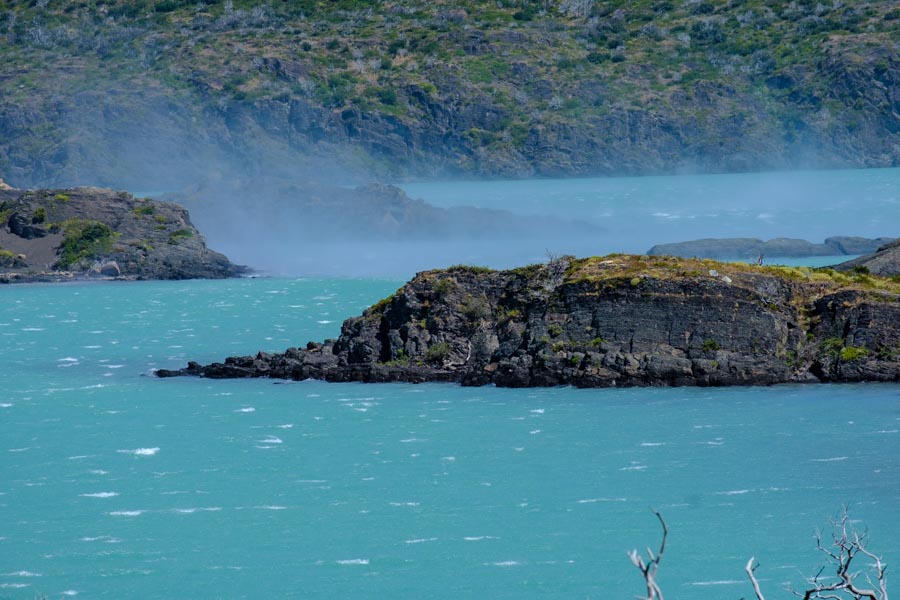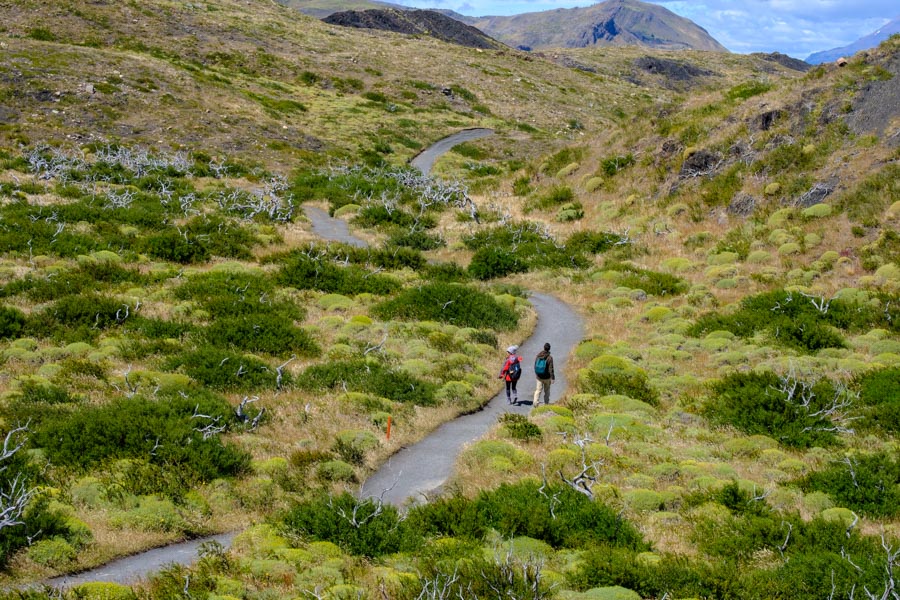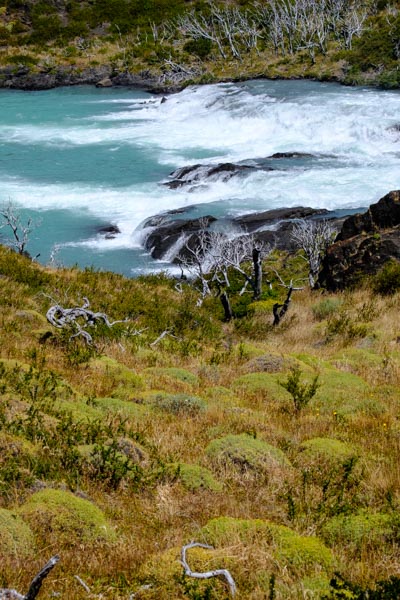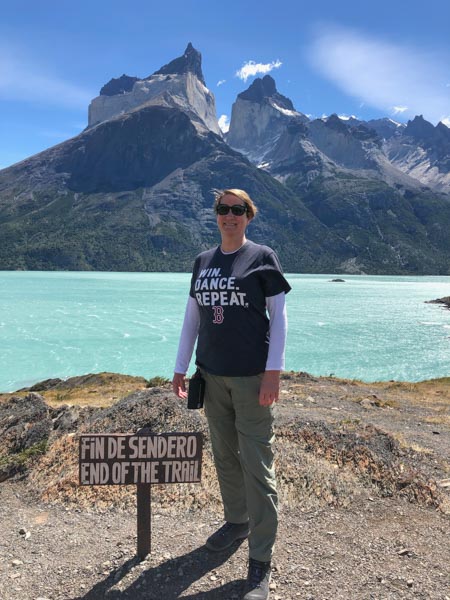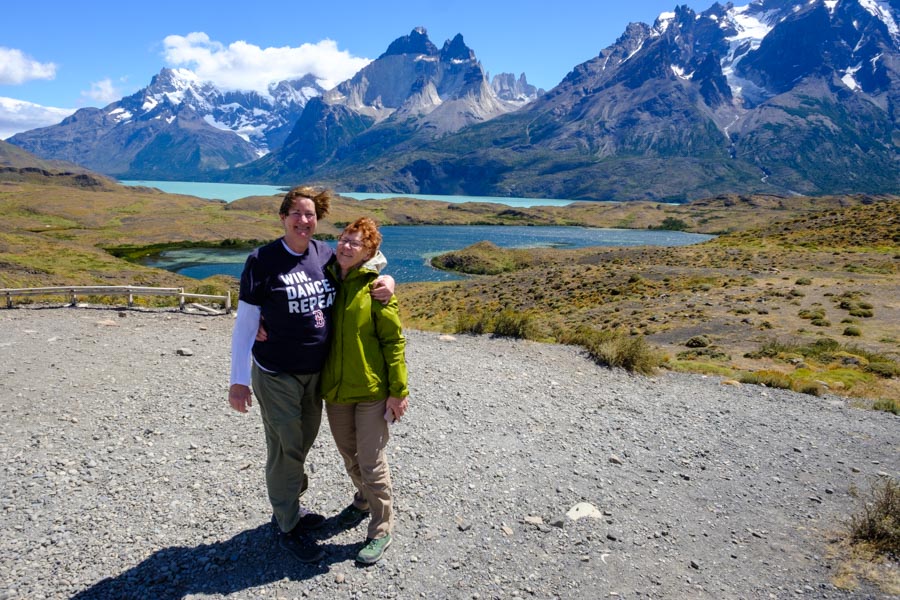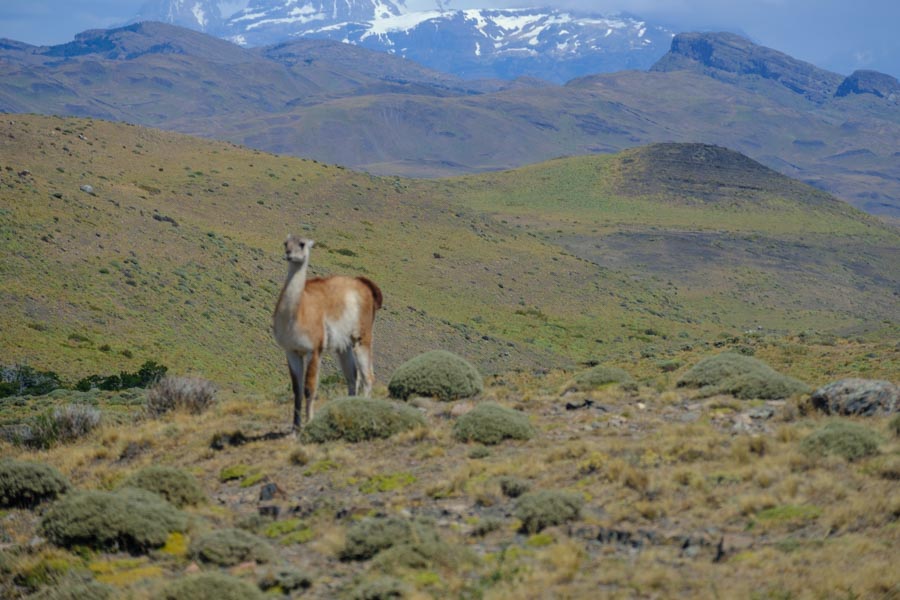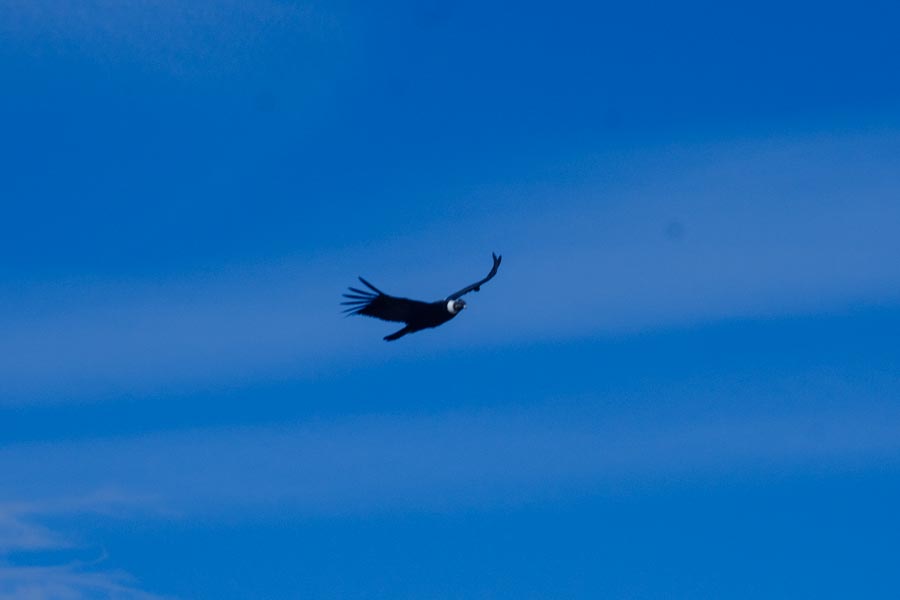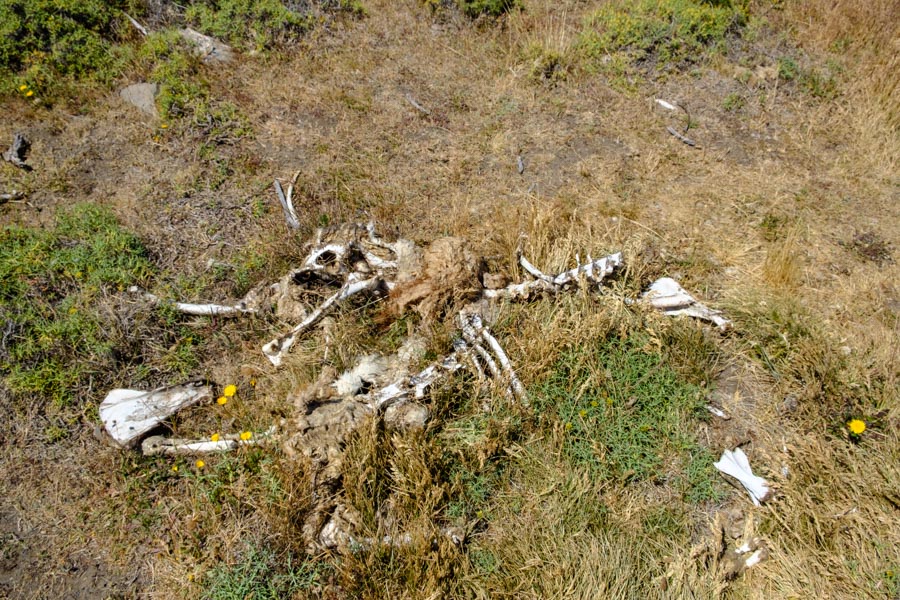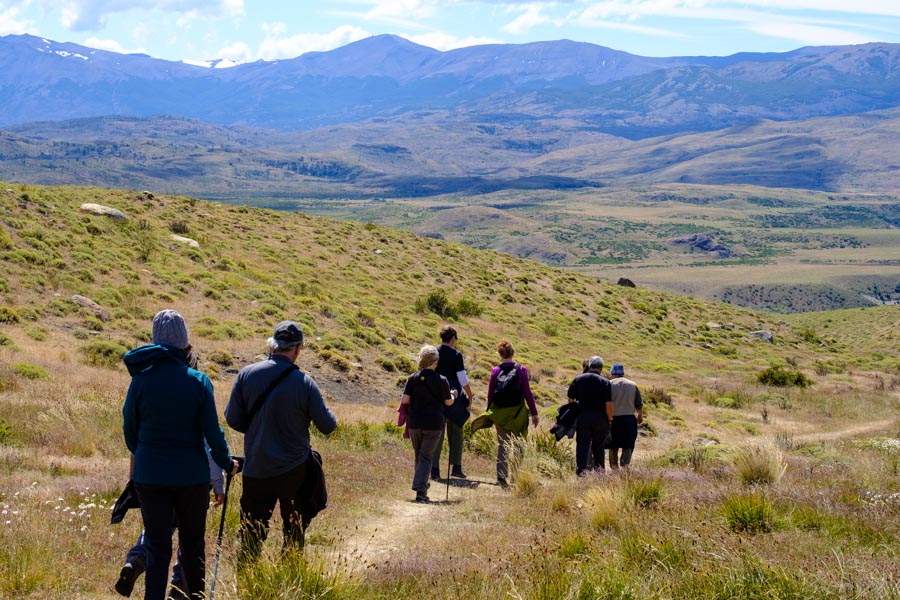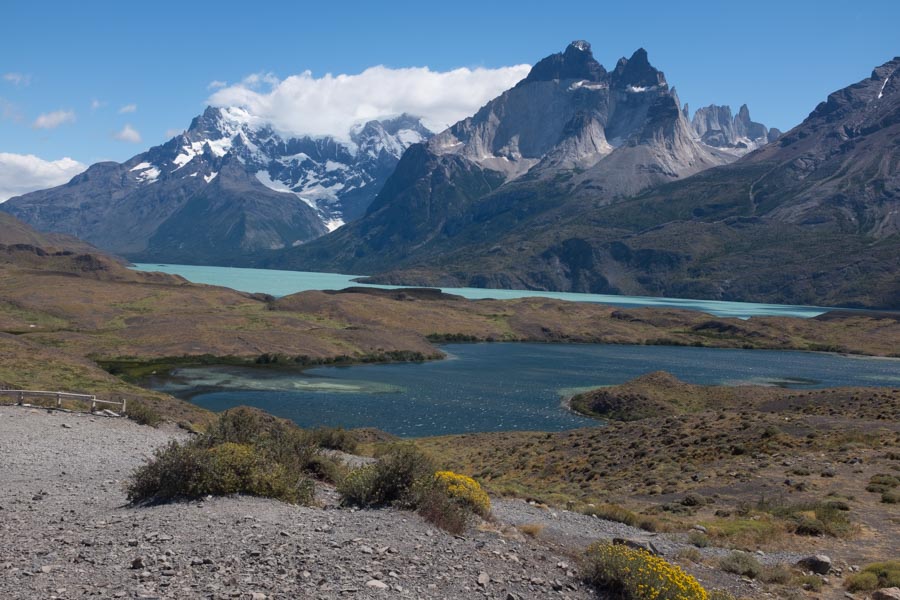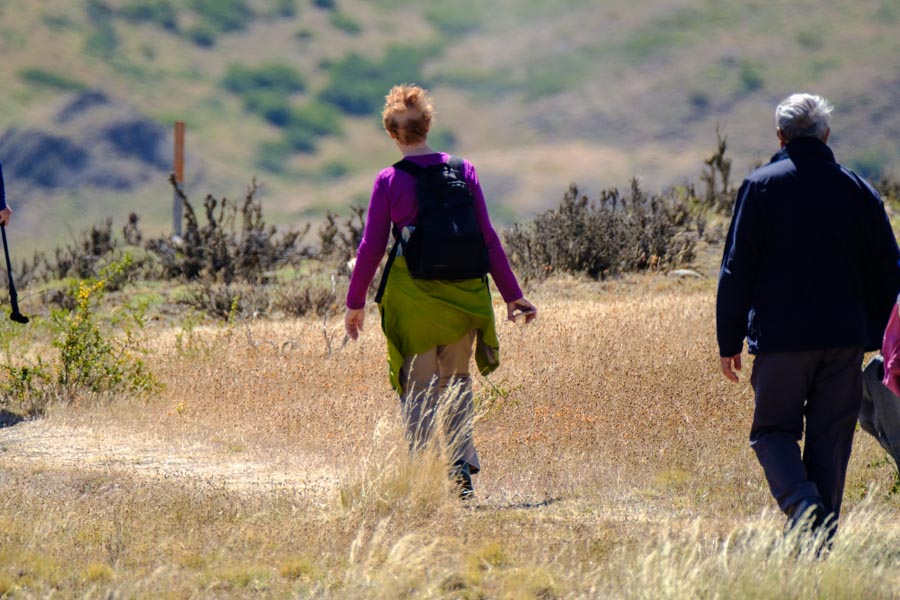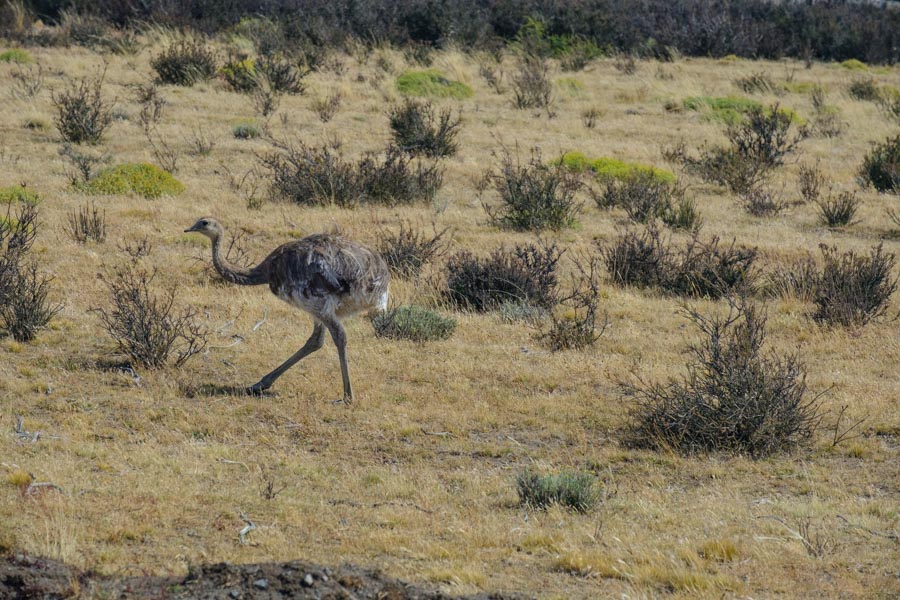Move over Canadian Rockies, Swiss Alps and even good pls Mount Katahdin. Torres del Paine and its Paine Massif will give you a strong run for your money. I’ll let the pictures show you what I mean and you can decide. You’ll have to agree they’re pretty impressive.
Torres del Paine is a 935 square mile park that includes not only the mountain peaks but also the Chilean ice field and the numerous glaciers that emanate from it. A glacier is a sheet of ice that is in motion. Snow and ice build up in the ice field; the resulting pressure and gravity force the ice down the side of a mountain. Voila: a glacier.
The mountains we observed here exhibit three distinct layers: a dark, black base made of metamorphic rocks from the earths crust; a light gray layer that is pure granite and a darker gray layer that is sedimentary rock; part of some ancient sea bed. The collision of the Pacific plate and the Continental plate thrust this combination up from beneath the earth’s surface to where we see it today.
That all happened about 12 million years ago, a blink of your eye in the scope of earth’s four billion year history. The ice ages sculpted the mountains a bit but compared to the older Andies and Rockies and much older Appalachian ranges the Paines are still pretty fresh.
Most of the park is covered with the steppe we saw yesterday on our way to Puerto Natales but with more hills. We took two walks, one this morning and one after a bag lunch. Each hike had three options: stay in the bus, a short hike or a long hike. In the morning Sharon and I did the long 2 hour/4 mile hike and Judy did the short hike of 30 minutes plus lots of picture taking time. All three of us did the long 45 minute version in the afternoon.
Both hikes offered spectacular views. The main feature of the morning hike was the wind: 40 to 50 MPH. That’s enough to make walking difficult and dangerous. Several times we had to stop, turn our backs to the wind and crouch down to avoid losing our footing. We could see mist being blown up into the air on the lake below us. Sure enough, we’d be hit with a blast a few a minute or so later.
The afternoon hike took us through the pumas’ dining room. We saw many guanacos grazing in groups (female) or solo (males). We also found several piles of guanaco bones. Pumas attack guanacos and eat them for dinner. We saw numerous guanacos as we walked but no pumas, just the bones that proved the cycle of life was in full swing.
Our lodging for tonight is Estancia Mirador del Paine. Estancia means ranch in Spanish and this is indeed a 30,000 acre cattle and sheep ranch that has been expanded to include 20 guest rooms and breakfast and dinner service. As the name implies the estancia has perfect views of the Paine massif.
Most of Patagonia including the land of this estancia was until the 1960s owned by first one and then a handful of individuals. President Kennedy convened a meeting of all South American presidents who pledge to implement land reform: breaking up the large landholdings and redistributing plots of land to the poor – thereby hoping to thwart the advance of communism in the region. Salvador Allende, the world’s first democratically elected president, accelerated land redistribution in Chile. Pinochet and the military junta reversed some of Allende’s redistribution. Today anyone can own land but the economics of sheep ranching in Patagonia is that a lot of land is needed to be viable.
So tomorrow is more hiking and a horseback ride in the afternoon.

